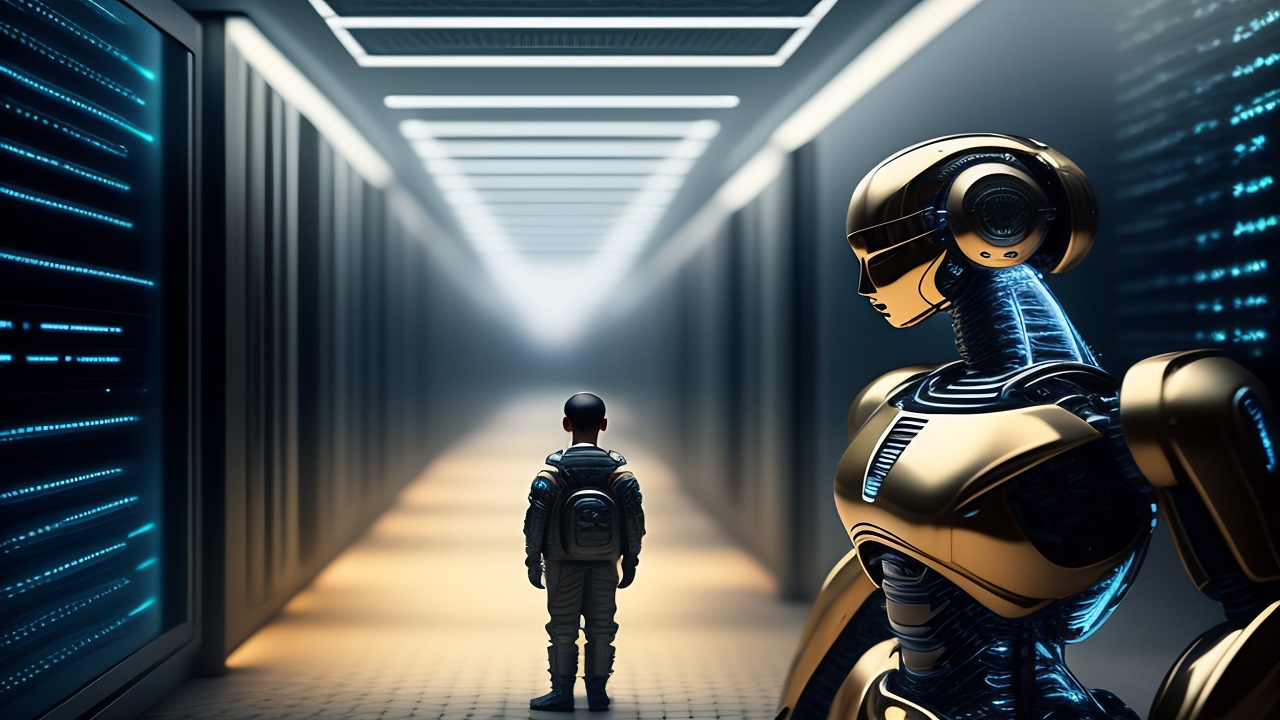Google has unveiled its latest innovation – Robotics Transformer 2, or RT2, a groundbreaking vision-language-action (VLA) model.
This cutting-edge technology possesses the ability to interpret both text and images and translate them into precise robotic actions, signifying a remarkable leap towards a robotic future.
Vincent Vanhoucke, the Head of Robotics at Google DeepMind, elucidated the significance of RT-2 in a blog post. He compared the training of language models on web text to impart general ideas and concepts with RT-2’s unique capability of transferring knowledge from web data to inform robot behavior. Essentially, RT-2 empowers robots to communicate effectively in their own language.
Read also: The Nigerian Team Wins Bronze At The First Global Robotics Challenge
The Need for “Grounding” in the Real World
Vanhoucke highlighted a crucial distinction between training chatbots and robots. While chatbots can be fed information about a topic, robots require “grounding” in the real world. For instance, explaining what an apple is to a chatbot suffices, but a robot must grasp comprehensive knowledge about the apple while also discerning it from similar items, like a red ball. Additionally, the robot must learn how to handle the apple appropriately.
One of the remarkable advancements of RT-2 over its predecessors, including Google’s RT-1 model, is its ability to leverage web data. In the past, training a robot to throw away an object like trash required explicit instruction on identifying trash and understanding its usage. With RT-2, the robot can learn and train itself based on data obtained from the web. Consequently, the robot can autonomously discern the concept of trash and grasp how to handle it without explicit instruction.
Empowering Robots to Learn and Apply Knowledge
The significance of RT-2 lies not only in its capacity for learning but also in its ability to apply acquired knowledge to future scenarios. This feature enhances a robot’s adaptability and performance, allowing it to tackle various physical tasks more effectively. However, it is essential to note that RT-2’s current limitations prevent it from learning physical tasks from scratch; it can only improve upon tasks it already possesses knowledge of.
While RT-2 represents a significant stride forward in the field of robotics, it also offers a glimpse into the potential of future developments. Google envisions a world where robots possess greater autonomy and independence, capable of learning and adapting to novel challenges.
South Africa to Add Robotics And Coding to School Curriculum
Other ways RT-2 differs from other AI bots
The robot powered by Google’s RT-2 model differs significantly from other AI chatbots in several key aspects:
Vision-Language-Action (VLA) Model: Unlike traditional chatbots that primarily rely on natural language processing (NLP), the RT-2 robot integrates vision, language, and action capabilities. This empowers the robot to comprehend both text and images and perform physical actions based on the given input.
Web Data Utilization: RT-2 stands out by its capability to learn from web data. Traditional chatbots typically rely on curated datasets for training, limiting their understanding to the provided information. In contrast, the RT-2 robot can autonomously acquire knowledge from the vast and ever-evolving expanse of web data, making it more adaptable and resourceful.
Application to Physical Tasks: The RT-2 robot is designed to excel at physical tasks. It can not only understand and process language but also convert that understanding into meaningful actions in the real world. This sets it apart from chatbots that primarily engage in text-based conversations and lack the ability to interact with the physical environment.
Knowledge Transfer and Adaptation: The RT-2 robot demonstrates the ability to apply acquired knowledge to new situations. It can learn from past experiences and adapt its actions accordingly, which enhances its overall performance and versatility. This is a significant departure from conventional chatbots that typically rely on pre-programmed responses without the ability to learn or evolve.
Potential for Autonomous Learning: While RT-2 can improve its performance in known tasks, it is important to note that the model’s current limitations prevent it from learning entirely new physical tasks from scratch. Nonetheless, the potential for future advancements in autonomous learning holds promise for robots to achieve even greater levels of self-sufficiency and problem-solving capabilities.
Generally, the RT-2 robot distinguishes itself from other AI chatbots by its fusion of vision, language, and action processing, its capacity to learn from web data, and its ability to interact with and understand the real world. This multifaceted approach positions the RT-2 robot as a significant step forward in the development of intelligent robotic systems.
Google’s RT-2 model stands as a testament to the ongoing progress in the field of robotics. By combining vision, language, and action capabilities, this innovative VLA model brings robots closer to achieving a higher level of understanding and interaction with the real world. While we witness RT-2’s incredible capabilities today, it serves as a stepping stone toward an even more remarkable robotic future. For a detailed technical explanation of RT-2, Google’s DeepMind blog provides comprehensive insights into this groundbreaking technology.




